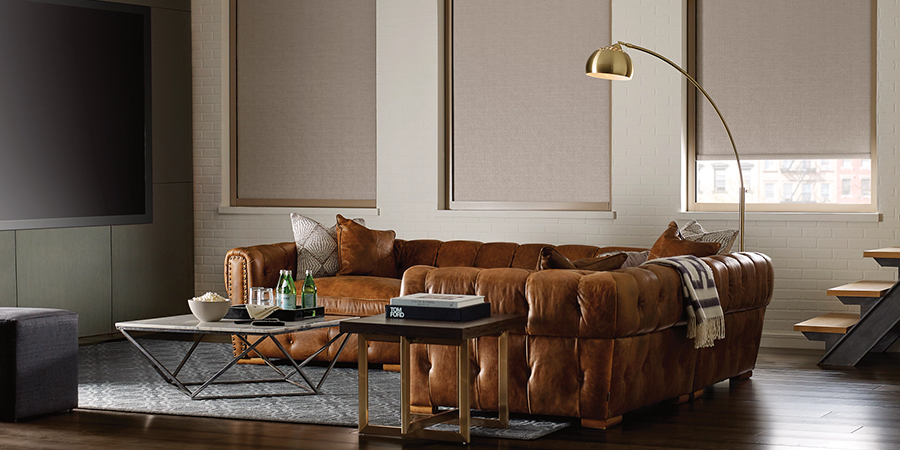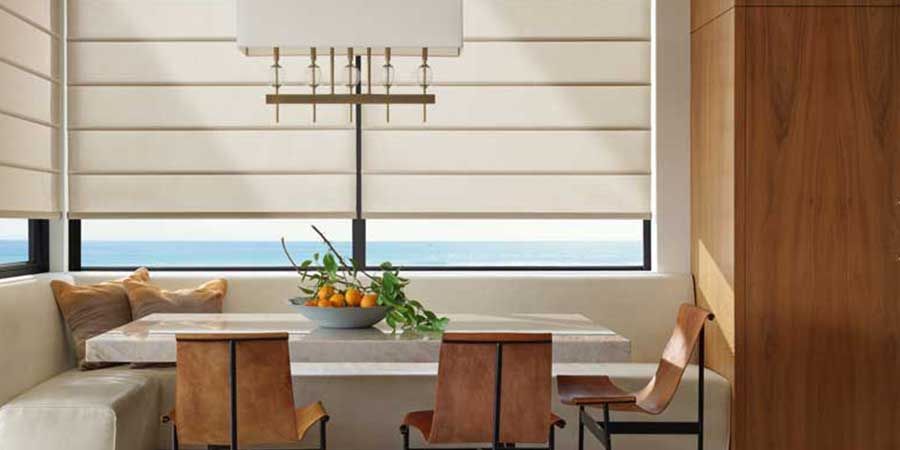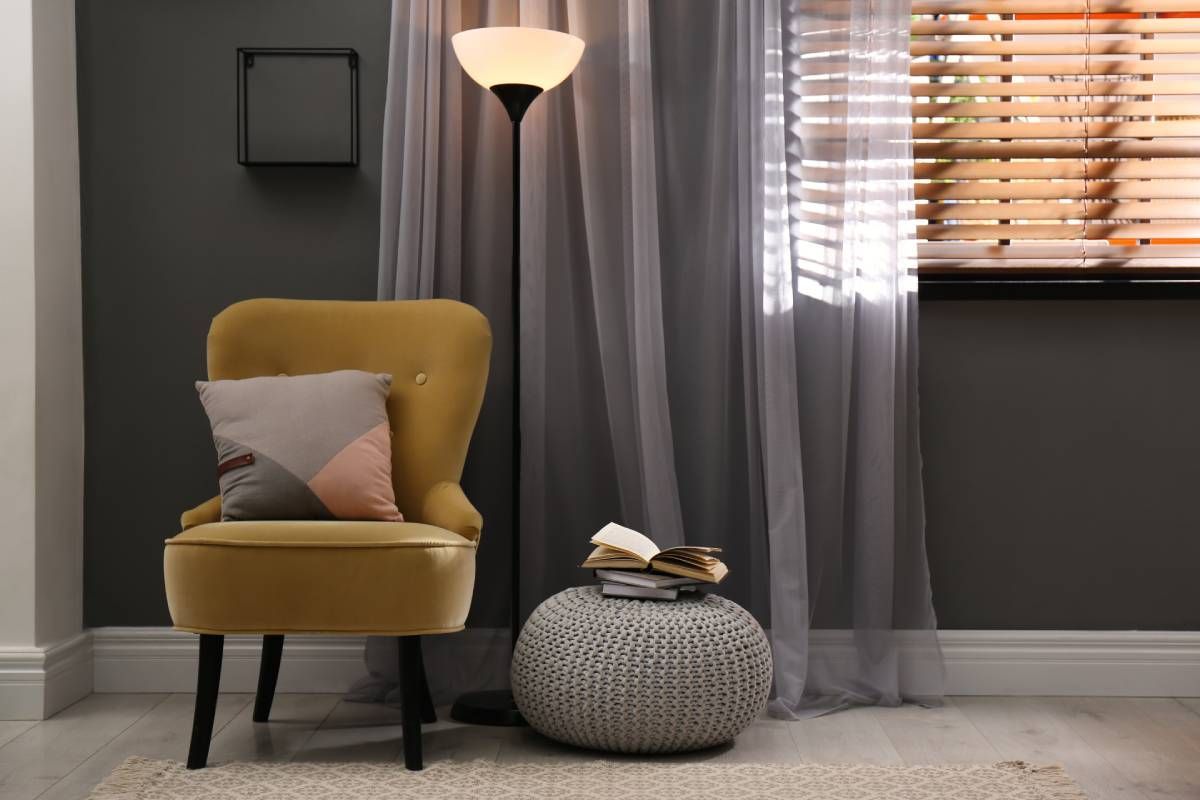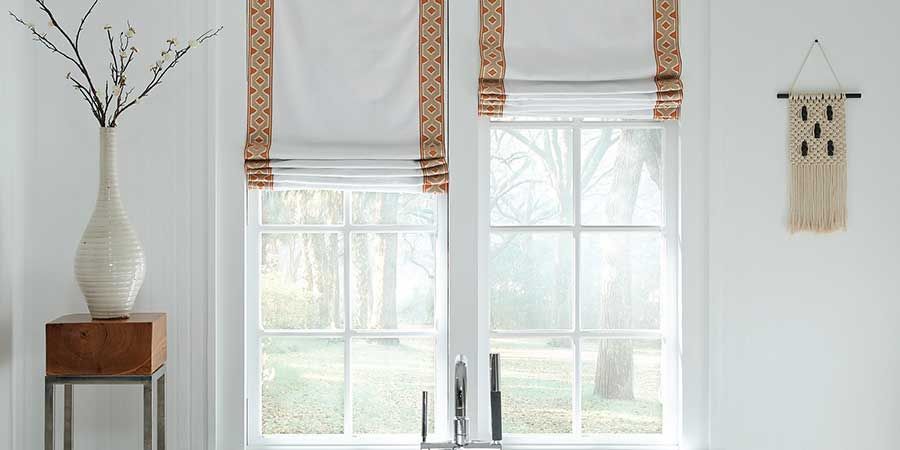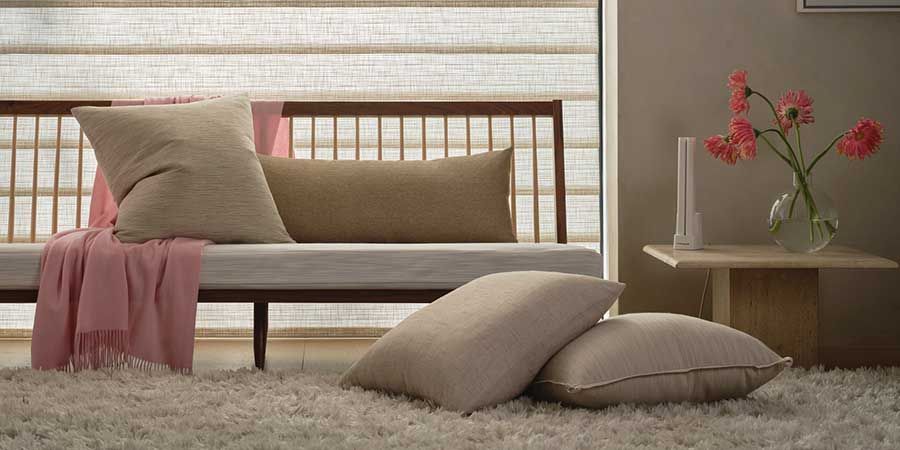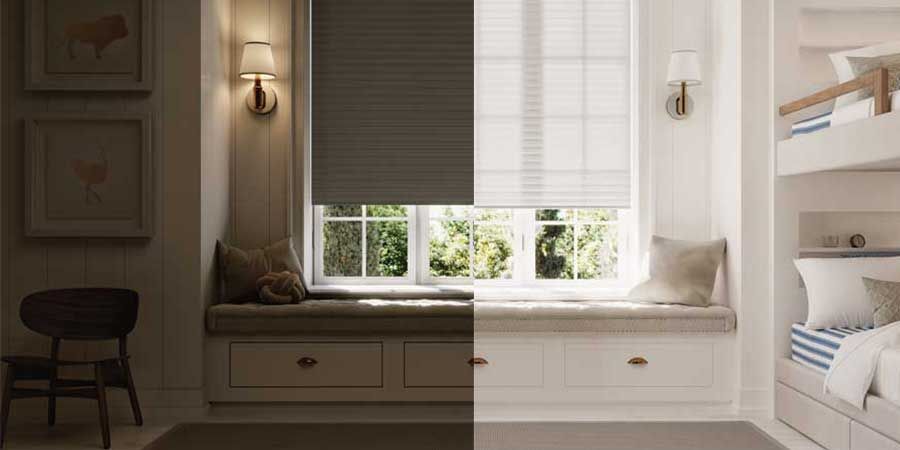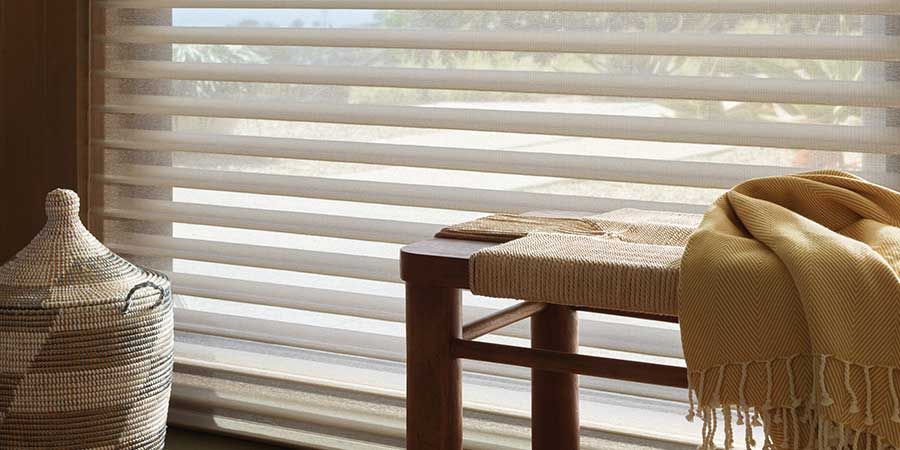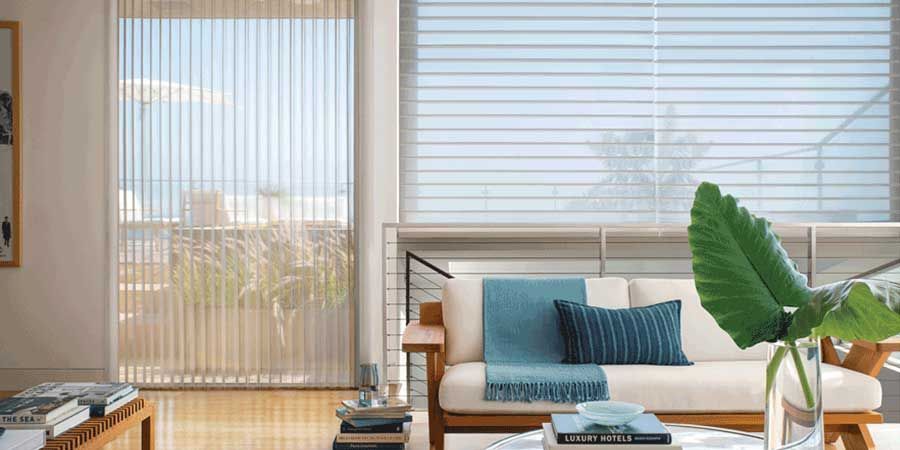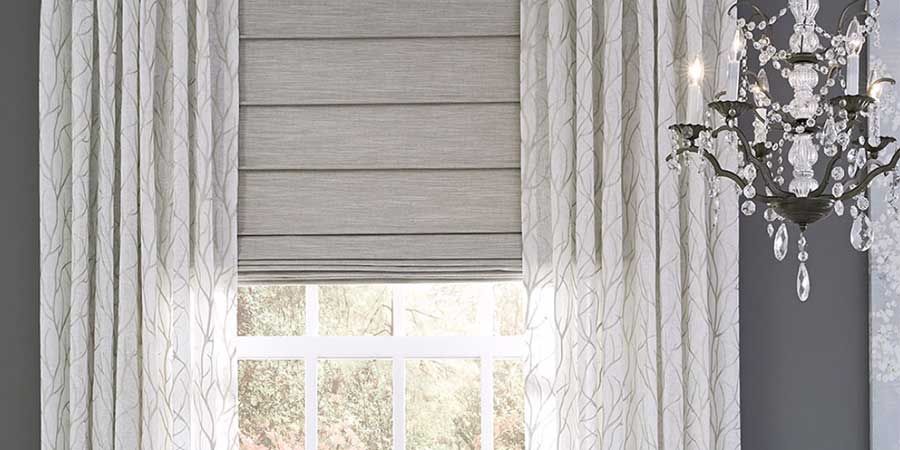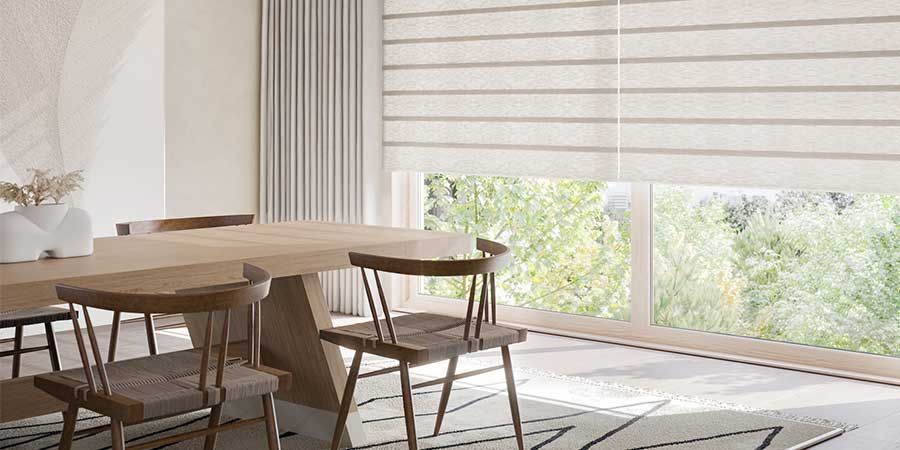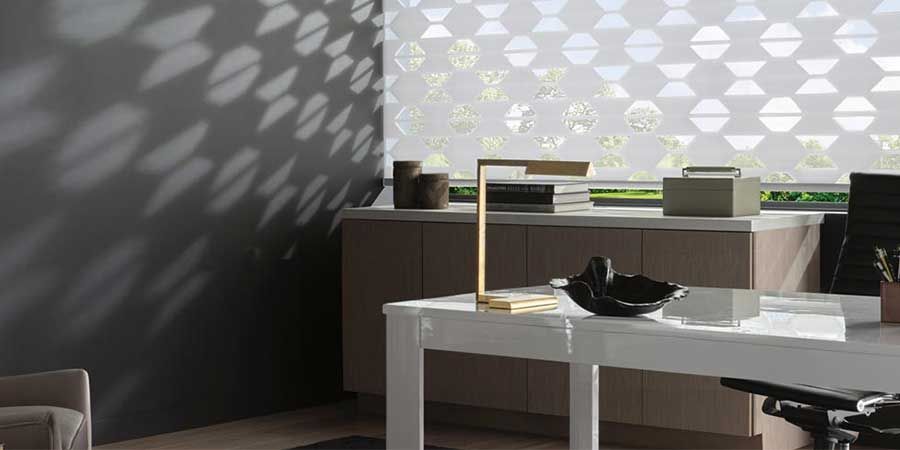Because of their rich flowing folds, drapes always look good when you pair them with a more straightforward window treatment, such as blinds or shades. This detail will give your windows a stately, layered look and increase the insulation and privacy of your windows. Our design experts at Seeview Blinds & Shutters are eager to share tips on pairing drapery with other window treatments, such as blinds and shades.
Keep it Simple
Since layering window treatments is already more of a maximalist technique, you want to keep it as simple as possible. Refrain from mixing too many varying patterns. Instead, choose either a patterned drape and a solid blind or shade or the opposite.
If you have a skilled design eye, you can use a pattern on both, but you will want to do this carefully. Consider a floral drape with a striped blind donning the same hues or a gentle silhouette damask drape with a lightly polka-dotted shade. It all depends on your personal preference.
Think about Drapery Length and Hanging Position
The length of your drapes and their hanging position can create various looks. If you want a dramatic look, pool your curtains on the bottom of the floor. If you want to add height to your room, hang the curtains adjacent to the ceiling. Be sure that when you add the blind or shade, you don’t overlap the lengths. Typically, blinds or shades should be the length of the window.
Consider Drapery Styles
Hunter Douglas Drapes are available in side and full drapery panels. Side panels are available in a two-finger pinch-pleat, two-finer European pinch-pleat, and grommet. Full panels are available in both two-finger pinch-pleat styles and ripple folds:
- Two-Finger Pinch-Pleat: The drape has pleats that you tack together at the top or the bottom third. The pleats can go up to five fingers, and the depth and fullness increase with each finger pleat.
- Two-Finger European Pinch-Pleat: This style uses pinched pleats at the top and open at the bottom, allowing the fabric to billow at the floor for a graceful, flowing aesthetic.
- Ripple Fold: The panel is flat in the ripple fold, and the pleats have snaps on the header of the curtain. The spacing of the snaps determines the fullness level of the pleats.
Once you’ve decided on the style of drape, it’s time to consider your options for pairing shades and blinds.
Hunter Douglas Blinds and Shades
We offer Hunter Douglas window blinds in three different types:
- Parkland® Wood Blinds uses 100% natural wood in various colors and finishes.
- EverWood® Alternative Wood Blinds are an excellent choice for rooms that withstand humidity and moisture. They also come in an array of colors and beautiful finishes.
- Modern Precious Metals Aluminum Blinds have high-quality aluminum and a sleek modern look.
Hunter Douglas Window Shades come in a large variety of types:
- Designer Roller Shades offer a tremendous minimalist style in various colors and textures.
- Designer Screen Shades are perfect for intensely sunny regions as they curb against harsh UV rays.
- Designer Banded Shades are a natural fit if you want a lot of natural light without compromising your privacy.
- Sonnette® Cellular Roller Shades, Cellular Honeycomb Shades, and Duette® Honeycomb Shades are excellent choices if you are seeking more energy efficiency.
- Vignette® Modern Roman Shades offer beautiful pleats and folds in different styles and sizes.
Contact Seeview Blinds & Shutters for Drapery and Window Treatments
Gotcha Covered Seeview Binds and Shutters is your premier source for all things in window coverings. Our dedicated staff is eager to assist you in learning how to pair drapes with blinds and shades to achieve a stunning window treatment.
Stop in one of our showrooms in Bedford or Dartmouth or set up an online consultation, and one of our friendly team members will reach out. We are proud to serve the greater Halifax area and neighboring communities.
